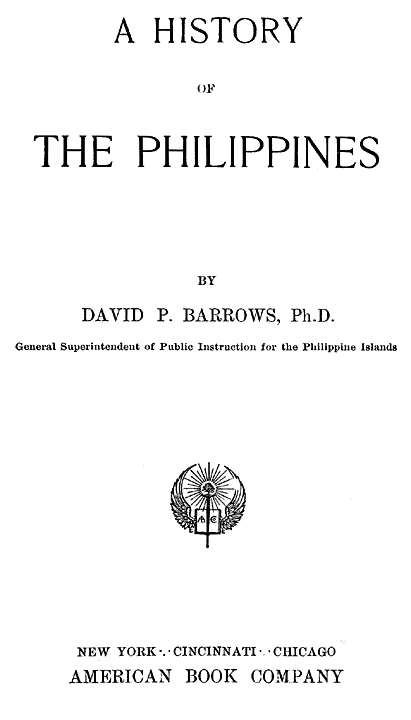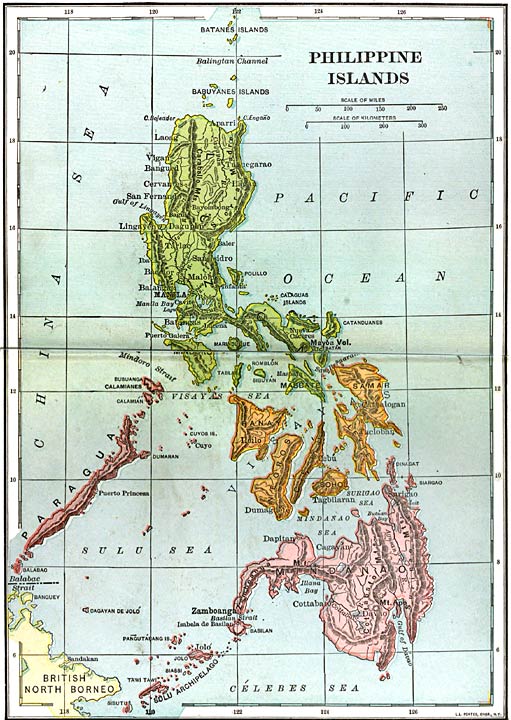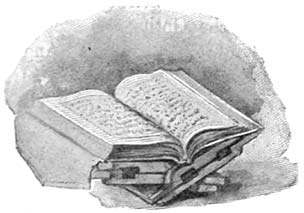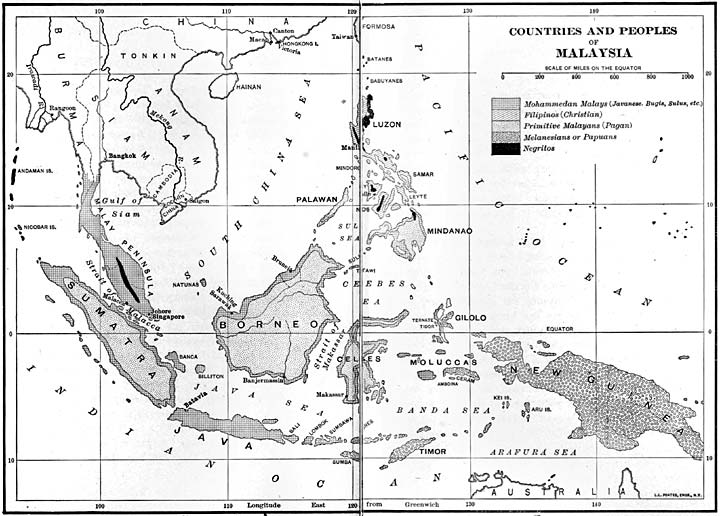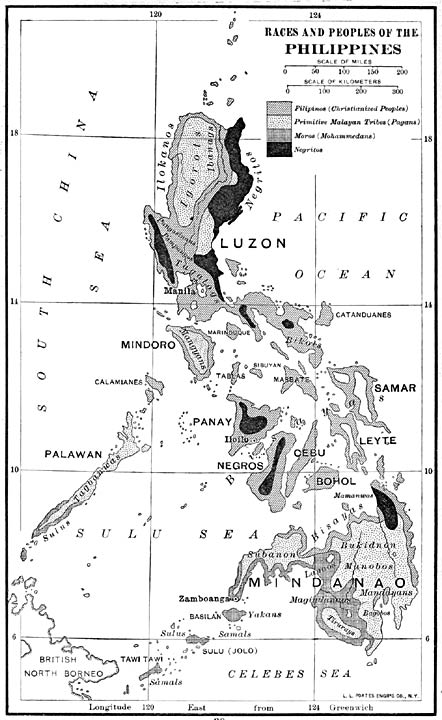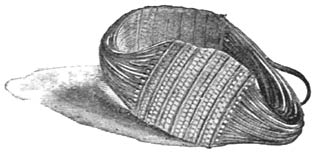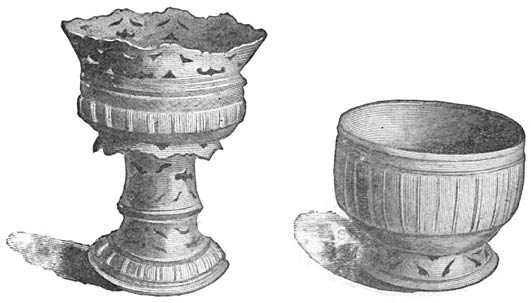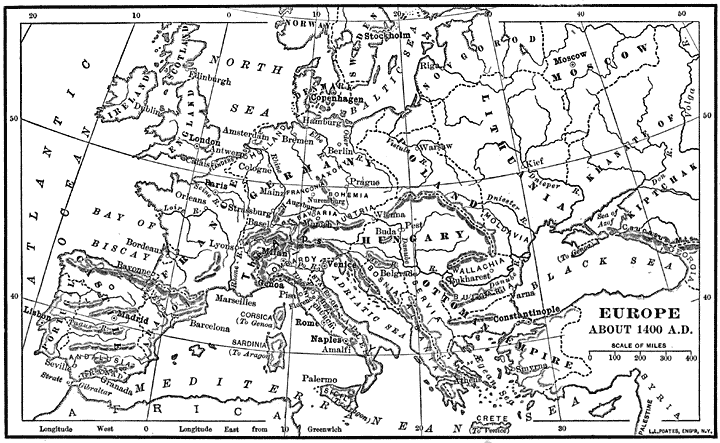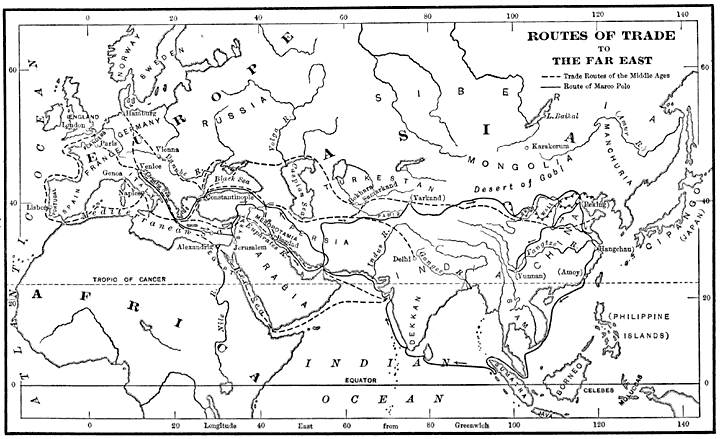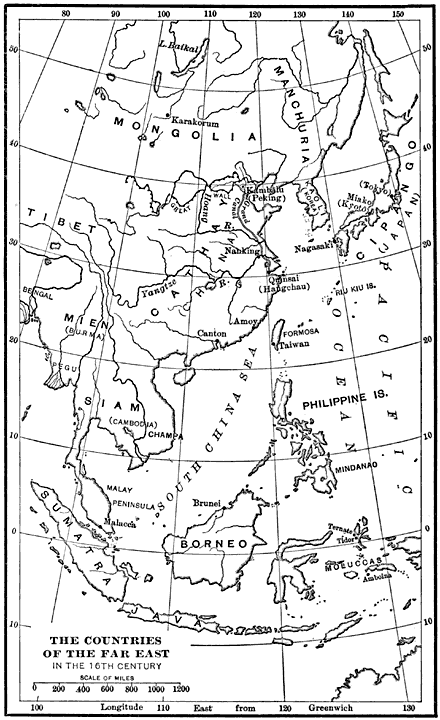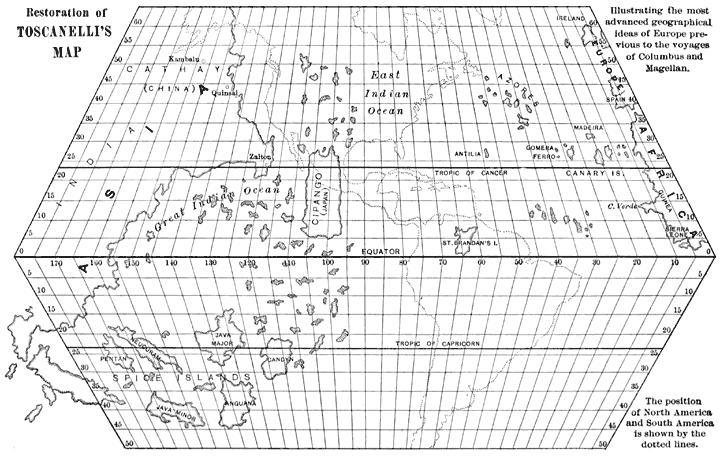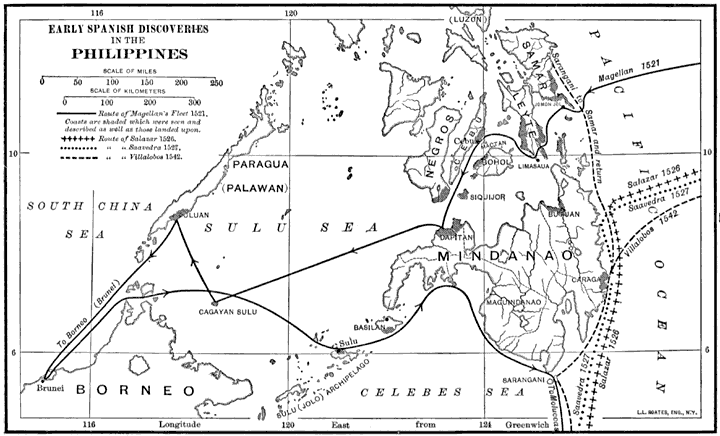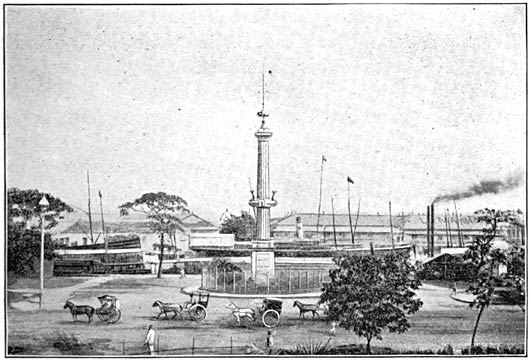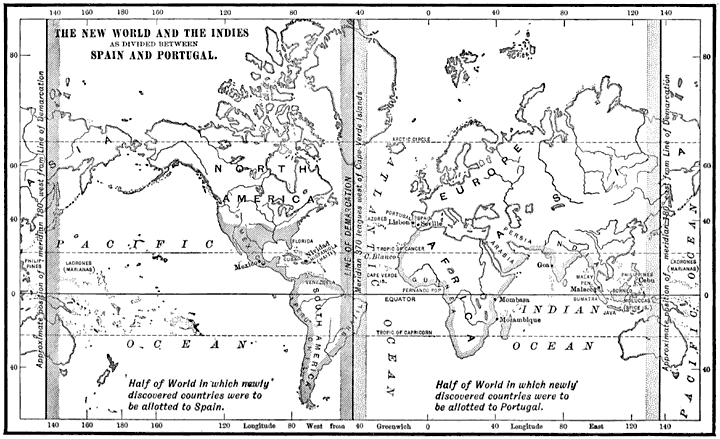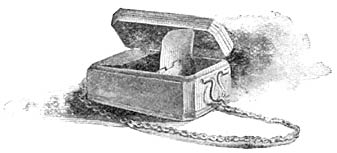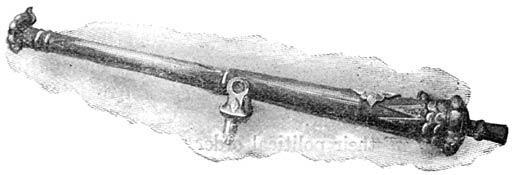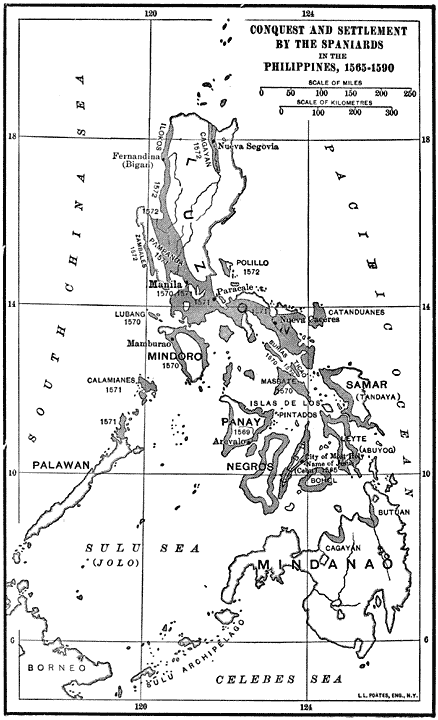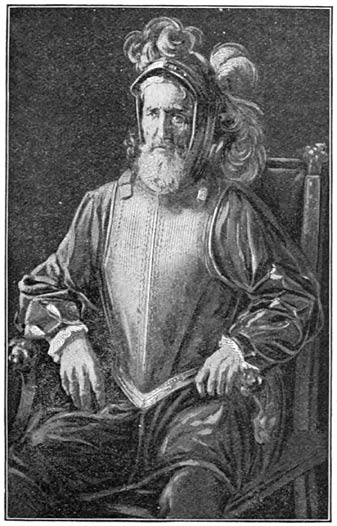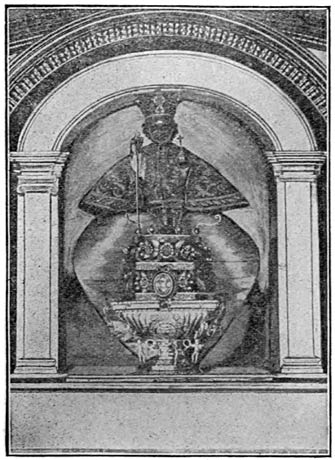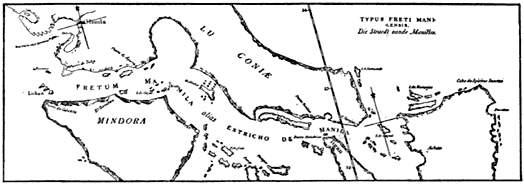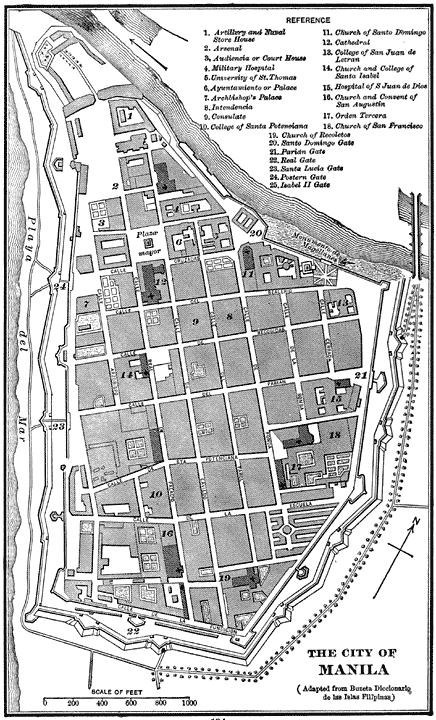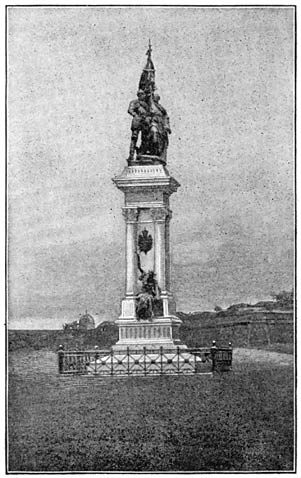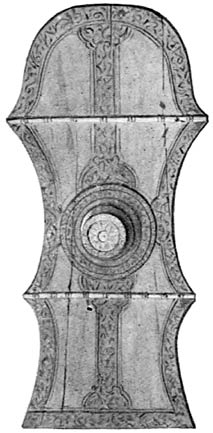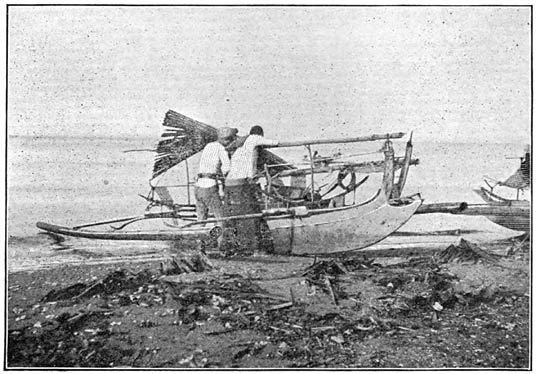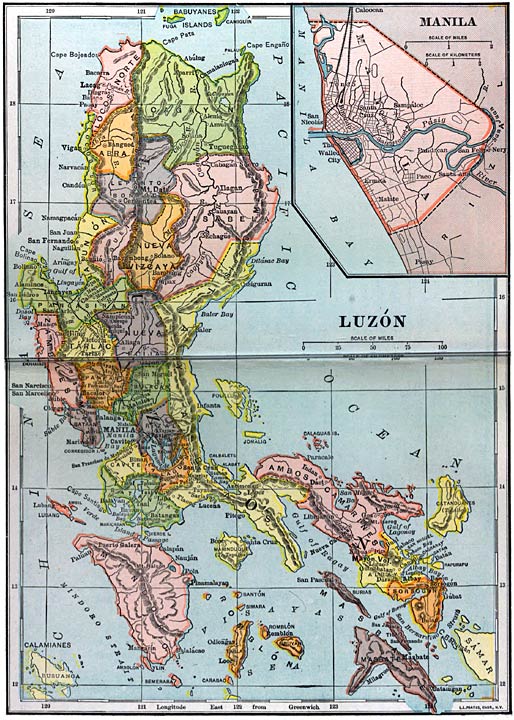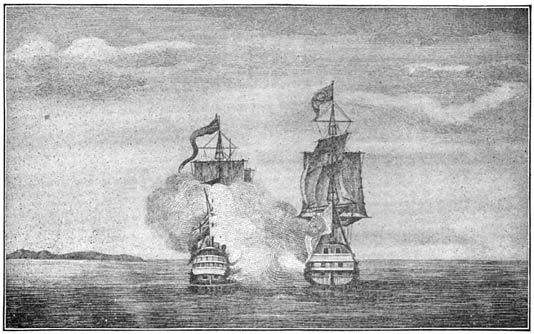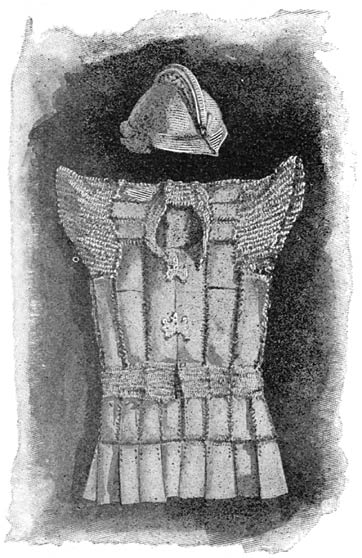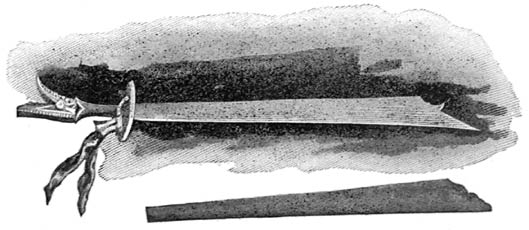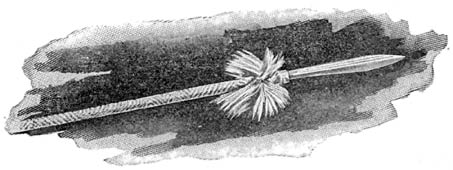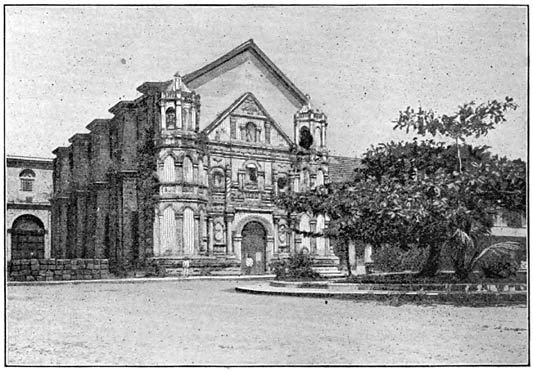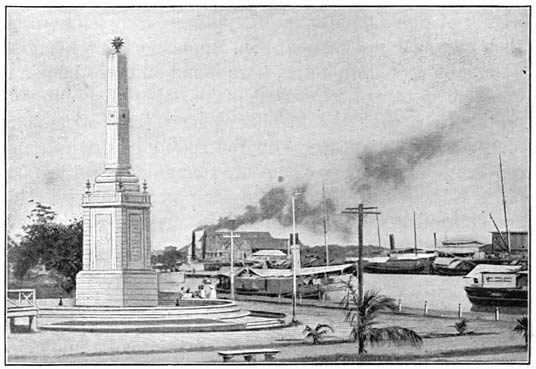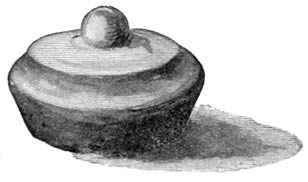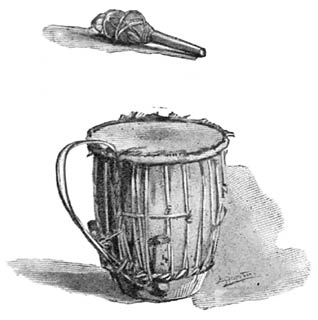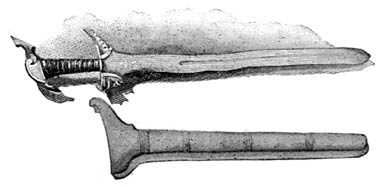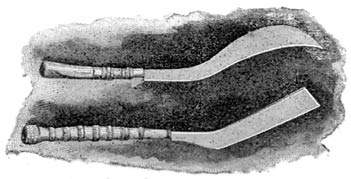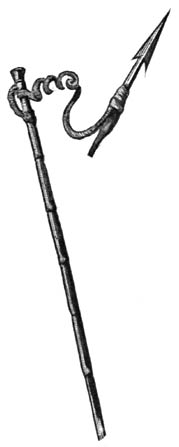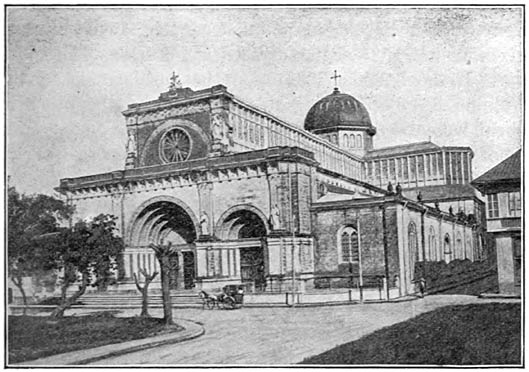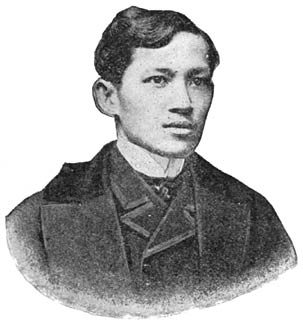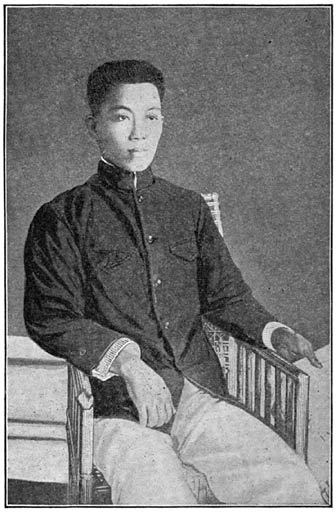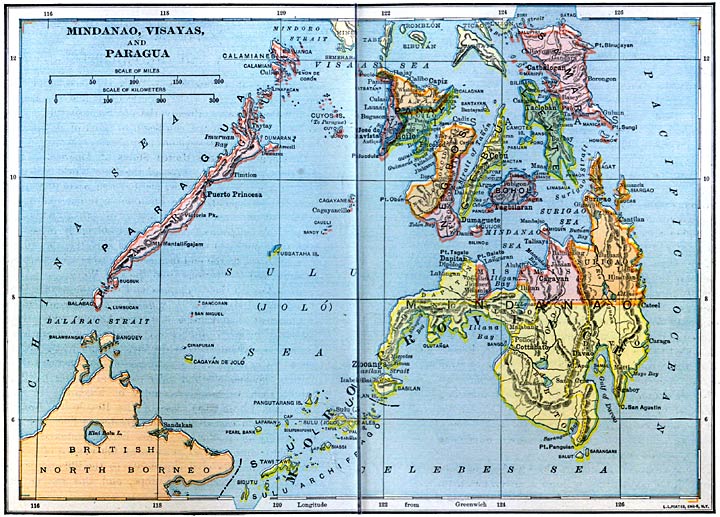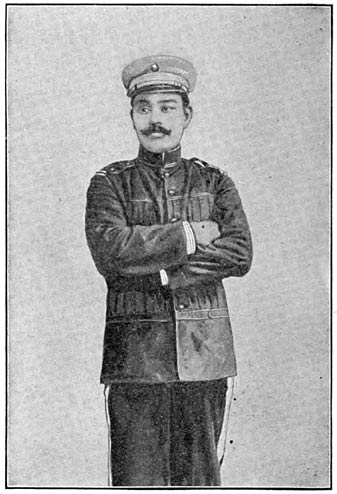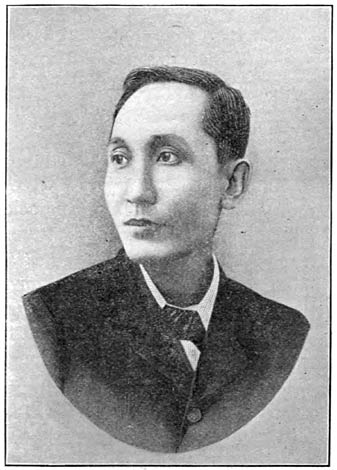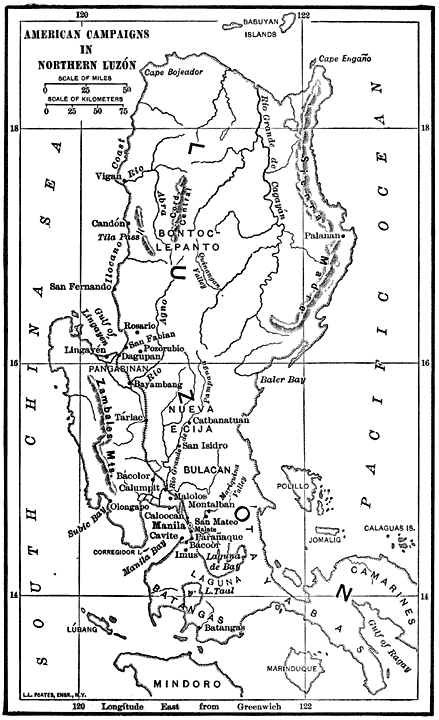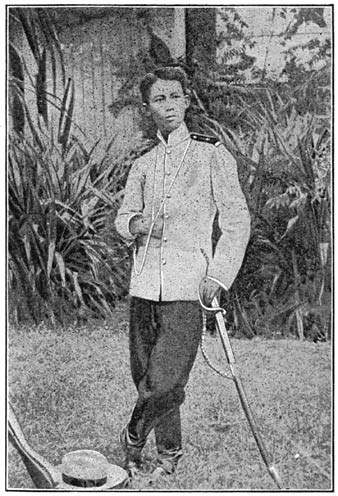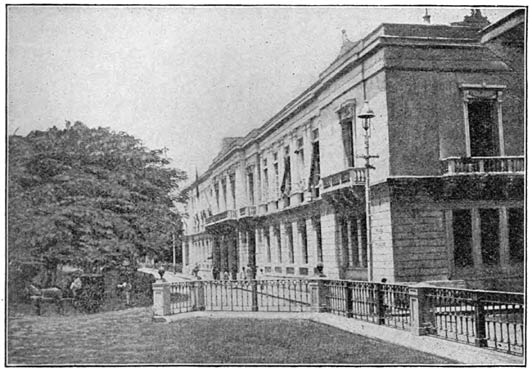Condition of the Archipelago at the Beginning of
the Seventeenth Century.—The Spanish Rule Completely
Established.—At the close of the sixteenth century the
Spaniards had been in possession of the Philippines for a generation.
In these thirty-five years the most striking of all the results of the
long period of Spanish occupation were accomplished. The work of these
first soldiers and missionaries established the limits and character of
Spanish rule as it was to remain for 250 years. Into this first third
of a century the Spaniard crowded all his heroic feats of arms,
exploration, and conversion. Thereafter, down to 1850, new fields were
explored, and only a few new tribes Christianized.
The survey of the archipelago given by Morga soon after 1600 reads
like a narrative of approximately modern conditions. It reveals to us
how great had been the activities of the early Spaniard and how small
the achievements of his countrymen after the seventeenth century began.
All of the large islands, except Paragua and the Moro country, were, in
that day, under encomiendas, their inhabitants paying tributes and for
the most part professing the Catholic faith.
The smaller groups and islets were almost as thoroughly exploited.
Even of the little Catanduanes, lying off the Pacific coast of Luzon,
Morga could say, “They are well populated with natives,—a
good race, all encomended [157]to Spaniards, with doctrine and
churches, and an alcalde-mayor, who does justice among them.”
He says of the Babuyanes at the extreme north of the archipelago,
“They are not encomended, nor is tribute collected among them,
nor are there Spaniards among them, because they are of little reason
and politeness, and there have neither been Christians made among them,
nor have they justices.” They continued in this condition until a
few years before the end of Spanish rule. In 1591, however, the
Babuyanes had been given in encomienda to Esteban de la Serna and
Francisco Castillo. They are put as having two thousand inhabitants and
five hundred “tributantes,” but all unsubdued (“todos
alçados”).
On some islands the hold of the Spaniards was more extensive in
Morga’s day than at a later time. Then the island of Mindoro was
regarded as important, and in the early years and decades of Spanish
power appears to have been populous along the coasts. Later it was
desolated by the Moro pirates and long remained wild and almost
uninhabited except by a shifting population from the mainland of
Luzon.
The Encomiendas.—The first vessels that followed the
expedition of Legaspi had brought orders from the king that the Islands
should be settled, and divided in encomiendas to those who had
conquered and won them.1 On this instruction, Legaspi had
given the Filipinos in encomienda to his captains and soldiers as fast
as the conquest proceeded.
We are fortunate to have a review of these encomiendas, made in
1591, about twenty-five years after the system was introduced into the
Islands.2 There were then 267 [160]encomiendas in the
Philippines, of which thirty-one were of the king, and the remainder of
private persons.
Population under the Encomiendas.—From the enumeration
of these encomiendas, we learn that the most populous parts of the
archipelago were La Laguna, with 24,000 tributantes and 97,000
inhabitants, and the Camarines, which included all the Bicol territory,
and the Catanduanes, where there were 21,670 tributantes and a
population of over 86,000, In the vicinity of Manila and Tondo, which
included Cavite and Marigondon, the south shore of the bay, and Pasig
and Taguig, there were collected 9,410 tributes, and the population was
estimated at about 30,000. In Ilocos were reported 17,130 tributes and
78,520 souls.
The entire valley of the Cagayan had been divided among the soldiers
of the command which had effected the conquest. In the list of
encomiendas a few can be recognized, such as Yguig and Tuguegarao, but
most of the names are not to be found on maps of to-day. Most of the
inhabitants were reported to be “rebellious”
(alçados), and some were apparently the same wild tribes which
still occupy all of this water-shed, except the very banks of the
river; but none the less had the Spaniards divided them off into
“repartimientos.” One soldier had
even taken as an encomienda the inhabitants of the upper waters of the
river, a region which is called in the Relacion
“Pugao,” with little doubt the habitat of the same Igorrote
tribe as the Ipugao, who still dwell in these mountains. The upper
valley of the Magat, or Nueva Vizcaya, does not appear to have been
occupied and probably was not until the missions of the eighteenth
century.
The population among the Bisayan islands was quite surprisingly
small, considering its present proportions. [161]Masbate, for example, had but 1,600 souls;
Burias, a like number; the whole central group, leaving out Panay, only
15,833 tributes, or about 35,000 souls. There was a single encomienda
in Butúan, Mindanao, and another on the Caraga coast. There were
a thousand tributes collected in the encomienda of Cuyo, and fifteen
hundred in Calamianes, which, says the Relacion,
included “los negrillos,” probably the mixed Negrito
population of northern Palawan.
The entire population under encomiendas is set down as 166,903
tributes, or 667,612 souls. This is, so far as known, the earliest
enumeration of the population of the Philippines. Barring the Igorrotes
of northern Luzon and the Moros and other tribes of Mindanao, it is a
fair estimate of the number of the Filipino people three hundred years
ago.
It will be noticed that the numbers assigned to single encomenderos
in the Philippines were large. In America the number was limited. As
early as 1512, King Ferdinand had forbidden any single person, of
whatever rank or grade, to hold more than three hundred Indians on one
island.3 But in the Philippines, a thousand or twelve
hundred “tributantes” were frequently held by a single
Spaniard.
Condition of the Filipinos under the Encomiendas.—Frequent
Revolts.—That the Filipinos on many of these islands bitterly
resented their condition is evidenced by the frequent uprisings and
rebellions. The encomenderos were often extortionate and cruel, and
absolutely heedless of the restrictions and obligations imposed upon
them by the Laws of the Indies. Occasionally a new governor,
[162]under the first impulse of instructions from
Mexico or Spain, did something to correct abuses. Revolts were almost
continuous during the year 1583, and the condition of the natives very
bad, many encomenderos regarding them and treating them almost as
slaves, and keeping them at labor to the destruction of their own crops
and the misery of their families. Gov. Santiago de Vera reached the
Islands the following year and made a characteristic attempt to improve
the system, which is thus related by Zuñiga:—
“As soon as he had taken possession of the government, he
studied to put into effect the orders which he brought from the king,
to punish certain encomenderos, who had abused the favor they had
received in being given encomiendas, whereby he deposed
Bartolomé de Ledesma, encomendero of Abuyo (Leyte), and others
of those most culpable, and punished the others in proportion to the
offenses which they had committed, and which had been proven.
“In the following year of 1585, he sent Juan de Morones and
Pablo de Lima, with a well equipped squadron, to the Moluccas, which
adventure was as unfortunate as those that had preceded it, and they
returned to Manila without having been able to take the fortress of
Ternate. The governor felt it very deeply that the expedition had
failed, and wished to send another armada in accordance with the orders
which the king had given him; but he could not execute this because the
troops from New Spain did not arrive, and because of the Indians, who
lost no occasion which presented itself to shake off the yoke of the
Spaniards.
“The Pampangos and many inhabitants of Manila confederated
with the Moros of Borneo, who had come for [163]trade, and plotted to enter the city by night,
set it on fire, and, in the confusion of the conflagration, slay all
the Spaniards. This conspiracy was discovered through an Indian woman,
who was married to a Spanish soldier, and measures to meet the
conspiracy were taken, before the mine exploded, many being seized and
suffering exemplary punishment.
“The islands of Samar, Ybabao, and Leyte were also in
disturbance, and the encomendero of Dagami, pueblo of Leyte, was in
peril of losing his life, because the Indians were incensed by his
thievings in the collection of tribute, which was paid in wax, and
which he compelled them to have weighed with a steelyard which he had
made double the legal amount, and wanted to kill him. They would have
done so if he had not escaped into the mountains and afterwards passed
by a banca to the island of Cebu. The governor sent Captain Lorenzo de
la Mota to pacify these disturbances; he made some punishments, and
with these everything quieted down.”4
Three years later, however, the natives of Leyte were again in
revolt. In 1589 Cagayan rose and killed many Spaniards. The revolt
seems to have spread from here to the town of Dingras, Ilocos, where
the natives rose against the collectors of tribute, and slew six
Spaniards of the pueblo of Fernandina. (Zuñiga, Historia de Filipinas, p. 165.)5
Effects of the Spanish Government.—The Spanish
occupation had brought ruin and misery to some parts of [164]the
country. Salazar describes with bitterness the evil condition of the
Filipinos. In the rich fields of Bulacan and Pampanga, great gangs of
laborers had been impressed, felling the forests for the construction
of the Spanish fleets and manning these fleets at the oars, on voyages
which took them for four and six months from their homes. The governor,
Don Gonzalez de Ronquillo, had forced many Indians of Pampanga into the
mines of Ilocos, taking them from the sowing of their rice. Many had
died in the mines and the rest returned so enfeebled that they could
not plant. Hunger and famine had descended upon Pampanga, and on the
encomienda of Guido de Lavazares over a thousand had died from
starvation.6
The Taxes.—The taxes were another source of abuse.
Theoretically, the tax upon Indians was limited to the
“tributo,” the sum of eight reales (about one dollar)
yearly from the heads of all families, payable either in gold or in
produce of the district. But in fixing the prices of these commodities
there was much extortion, the encomenderos delaying the collection of
the tribute until the season of scarcity, when prices were high, but
insisting then on the same amount as at harvest-time.
The principal, who occupied the place of the former dato, or
“maharlica,” like the gobernadorcillo of recent times, was
responsible for the collecting of the tribute, and his lot seems to
have been a hard one. “If they do not give as much as they ask,
or do not pay for as many Indians as they say there are, they abuse the
poor principal, or throw him into the pillory (cepo de
cabeza), because all the encomenderos, when they go to make
collections, take their pillories with them, and there they keep
[165]him and torment him, until forced to give all
they ask. They are even said to take the wife and daughter of the
principal, when he can not be found. “Many are the principales
who have died under these torments, according to reports.”
Salazar further states that he has known natives to be sold into
slavery, in default of tribute. Neither did they impose upon adults
alone, but “they collect tribute from infants, the aged and the
slaves, and many do not marry because of the tribute, and others slay
their children.”7
Scarcity of Food.—Salazar further charges that the
alcaldes mayores (the alcaldes of provinces), sixteen in number, were
all corrupt, and, though their salaries were small, they accumulated
fortunes. For further enumeration of economic ills, Salazar details how
prices had evilly increased. In the first years of Spanish occupation,
food was abundant. There was no lack of rice, beans, chickens, pigs,
venison, buffalo, fish, cocoanuts, bananas, and other fruits, wine and
honey; and a little money bought much. A hundred gantas (about three
hundred pints) of rice could then be bought for a toston (a Portuguese
coin, worth about a half-peso), eight to sixteen fowls for a like
amount, a fat pig for from four to six reales. In the year of his
writing (about 1583), products were scarce and prices exorbitant. Rice
had doubled, chickens were worth a real, a good pig six to eight pesos.
Population had decreased, and whole towns were deserted, their
inhabitants having fled into the hills.
General Improvement under Spanish Rule.—This is one
side of the picture. It probably is overdrawn by the bishop, who was
jealous of the civil authority and who began the first of those
continuous clashes between the [166]church and political power in
the Philippines. Doubtless if we could see the whole character of
Spanish rule in these decades, we should see that the actual condition
of the Filipino had improved and his grade of culture had arisen. No
one can estimate the actual good that comes to a people in being
brought under the power of a government able to maintain peace and
dispense justice. Taxation is sometimes grievous, corruption without
excuse; but almost anything is better than anarchy.
Before the coming of the Spaniards, it seems unquestionable that the
Filipinos suffered greatly under two terrible grievances that inflict
barbarous society,—in the first place, warfare, with its murder,
pillage, and destruction, not merely between tribe and tribe, but
between town and town, such as even now prevails in the wild mountains
of northern Luzon, among the primitive Malayan tribes; and in the
second place, the weak and poor man was at the mercy of the strong and
rich.
The establishment of Spanish sovereignty had certainly mitigated, if
it did not wholly remedy, these conditions. “All of these
provinces,” Morga could write, “are pacified and are
governed from Manila, having alcaldes mayores, corregidors, and
lieutenants, each one of whom governs in his district or province and
dispenses justice. The chieftains (principales), who formerly held the
other natives in subjection, no longer have power over them in the
manner which they tyrannically employed, which is not the least benefit
these natives have received in escaping from such
slavery.”8
Old Social Order of the Filipinos but Little
Disturbed.—Some governors seem to have done their utmost to
improve the condition of the people and to govern them [167]well. Santiago de Vera, as we have seen, even
went so far as to commission the worthy priest, Padre Juan de
Plasencia, to investigate the customs and social organization of the
Filipinos, and to prepare an account of their laws, that they might be
more suitably governed. This brief code—for so it is—was
distributed to alcaldes, judges, and encomenderos, with orders to
pattern their decisions in accordance with Filipino custom.9
In ordering local affairs, the Spaniards to some extent left the old
social order of the Filipinos undisturbed. The several social classes
were gradually suppressed, and at the head of each barrio, or small
settlement, was appointed a head, or cabeza de barangay. As these
barangays were grouped into pueblos, or
towns, the former datos were appointed captains and
gobernadorcillos.
The Payment of Tribute.—The tribute was introduced in
1570.10 It was supposed to be eight reales or a peso of
silver for each family. Children under sixteen and those over sixty
were exempt. In 1590 the amount was raised to ten reales. To this was
added a real for the church, known as “sanctorum,” and, on
the organization of the towns, a real for the caja de
communidad or municipal treasury. Under the encomiendas the
tribute was paid to the encomenderos, except on the royal encomiendas;
but after two or three generations, as the encomiendas were suppressed,
these collections went directly to the insular treasury. There was, in
addition to the tribute, a compulsory service of labor on roads,
bridges, and [168]public works, known as the “corvee,”
a feudal term, or perhaps more generally as the “polos y servicios.” Those discharging this enforced
labor were called “polistas.”
Conversion of the Filipinos to Christianity.—The
population had been very rapidly Christianized. All accounts agree that
almost no difficulty was encountered in baptizing the more advanced
tribes. “There is not in these islands a province,” says
Morga, “which resists conversion and does not desire
it.”11 Indeed, the Islands seem to have been ripe for
the preaching of a higher faith, either Christian or Mohammedan. For a
time these two great religions struggled together in the vicinity of
Manila,12 but at the end of three decades Spanish power and
religion were alike established. Conversion was delayed ordinarily only
by the lack of sufficient numbers of priests. We have seen that this
conversion of the people was the work of the missionary friars. In 1591
there were 140 in the Islands, but the Relacion de
Encomiendas calls for 160 more to properly supply the peoples which had
been laid under tribute.
Coming of the Friars.—The Augustinians had been the
first to come, accompanying Legaspi. Then came the barefooted friars of
the Order of Saint Francis. The first Jesuits, padres Antonio
Sedeño and Alonzo Sanchez, came with the first bishop of the
Islands, Domingo de Salazar, in 1580. They came apparently without
resources. Even their garments brought from Mexico had rotted on the
voyage. They found a little, poor, narrow house in a suburb of Manila,
called Laguio (probably Concepcion). “So poorly furnished was
it,” says Chirino, “that the same chest which held their
books was the table on which [169]they ate. Their food for many days
was rice, cooked in water, without salt or oil or fish or meat or even
an egg, or anything else except that sometimes as a regalo they enjoyed
some salt sardines.”13 After the Jesuits, came, as we
have seen, the friars of the Dominican order, and lastly the
Recollects, or unshod Augustinians.
Division of the Archipelago among the Religious
Orders.—The archipelago was districted among these missionary
bands. The Augustinians had many parishes in the Bisayas, on the
Ilocano coast, some in Pangasinan, and all of those in Pampanga. The
Dominicans had parts of Pangasinan and all of the valley of Cagayan.
The Franciscans controlled the Camarines and nearly all of southern
Luzon, and the region of Laguna de Bay. All of these orders had
convents and monasteries both in the city of Manila and in the country
round about. The imposing churches of brick and stone, which now
characterize nearly every pueblo, had not in those early decades been
erected; but Morga tells us that “the churches and monasteries
were of wood, and well built, with furniture and beautiful ornaments,
complete service, crosses, candlesticks, and chalices of silver and
gold.”14
The First Schools.—Even in these early years there seem
to have been some attempts at the education of the natives. The friars
had schools in reading and writing for boys, who were also taught to
serve in the church, to sing, to play the organ, the harp, guitar, and
other instruments. We must remember, however, that the Filipino before
the arrival of the Spaniard had a written language, and even in
pre-Spanish times there must have been instruction given to the child.
The type of humble school, [170]that is found to-day in remote
barrios, conducted by an old man or woman, on the floor or in the yard
of a home, where the ordinary family occupations are proceeding,
probably does not owe its origin to the Spaniards, but dates from a
period before their arrival. The higher education established by the
Spaniards appears to have been exclusively for the children of
Spaniards. In 1601 the Jesuits, pioneers of the Roman Catholic orders
in education, established the College of San José.
Establishment of Hospitals.—The city early had notable
foundations of charity. The high mortality which visited the Spaniards
in these islands and the frequency of diseases early called for the
establishment of institutions for the orphan and the invalid. In
Morga’s time there were the orphanages of San Andres and Santa
Potenciana. There was the Royal Hospital, in charge of three
Franciscans, which burned in the conflagration of 1603, but was
reconstructed. There was also a Hospital of Mercy, in charge of Sisters
of Charity from Lisbon and the Portuguese possessions of India.
Close by the Monastery of Saint Francis stood then, where it stands
to-day, the hospital for natives, San Juan de Dios. It was of royal
patronage, but founded by a friar of the Franciscan order, Juan
Clemente. “Here,” says Morga, “are cured a great
number of natives of all kinds of sicknesses, with much charity and
care. It has a good house and offices of stone, and is administered by
the barefooted religious of Saint Francis. Three priests are there and
four lay-brethren of exemplary life, who, with the doctors, surgeons,
and apothecaries, are so dexterous and skilled that they work with
their hands marvelous cures, both in medicine and
surgery.”15 [171]
Mortality among the Spaniards.—Mortality in the
Philippines in these years of conquest was frightfully high. The waste
of life in her colonial adventures, indeed, drained Spain of her best
and most vigorous manhood. In the famous old English collection of
voyages, published by Hakluyt in 1598, there is printed a captured
Spanish letter of the famous sea-captain, Sebastian Biscaino, on the
Philippine trade. Biscaino grieves over the loss of life which had
accompanied the conquest of the Philippines, and the treacherous
climate of the tropics. “The country is very unwholesome for us
Spaniards. For within these 20 years, of 14,000 which have gone to the
Philippines, there are 13,000 of them dead, and not past 1,000 of them
left alive.”16
The Spanish Population.—The Spanish population of the
Islands was always small,—at the beginning of the seventeenth
century certainly not more than two thousand, and probably less later
in the century. Morga divides them into five classes: the prelates and
ecclesiastics; the encomenderos, colonizers, and conquerors; soldiers
and officers of war and marine; merchants and men of business; and the
officers of his Majesty’s government. “Very few are living
now,” he says, “of those first conquistadores who won the
land and effected the conquest with the Adelantado Miguel Lopez de
Legaspi.”17
The Largest Cities.—Most of this Spanish population
dwelt in Manila or in the five other cities which the Spaniards
[172]had founded in the first three decades of their
occupation. Those were as follows:—
The City of Nueva Segovia, at the mouth of the Cagayan, was
founded in the governorship of Ronquillo, when the valley of the
Cagayan was first occupied and the Japanese colonists, who had settled
there, were expelled. It had at the beginning of the seventeenth
century two hundred Spaniards, living in houses of wood. There was a
fort of stone, where some artillery was mounted. Besides the two
hundred Spanish inhabitants there were one hundred regular Spanish
soldiers, with their officers and the alcalde mayor of the province.
Nueva Segovia was also the seat of a bishopric which included all
northern Luzon. The importance of the then promising city has long ago
disappeared, and the pueblo of Lallo, which marks its site, is an
insignificant native town.
The City of Nueva Caceres, in the Camarines, was founded by
Governor La-Sande. It, too, was the seat of a bishopric, and had one
hundred Spanish inhabitants.
The Cities of Cebu and Iloilo.—In the Bisayas were the
Cities of the Holy Name of God (Cebu), and on the island of Panay,
Arévalo (or Iloilo). The first maintained something of the
importance attaching to the first Spanish settlement. It had its stone
fort and was also the seat of a bishopric. It was visited by
trading-vessels from the Moluccas, and by permit of the king enjoyed
for a time the unusual privilege of sending annually a ship loaded with
merchandise to New Spain. Arévalo had about eighty Spanish
inhabitants, and a monastery of the Augustinians.
The City of Fernandina, or Vigan, which Salcedo had founded,
was nearly without Spanish inhabitants. [173]Still, it was the
political center of the great Ilocano coast, and it has held this
position to the present day.
Manila.—But all of these cities were far surpassed in
importance by the capital on the banks of the Pasig. The wisdom of
Legaspi’s choice had been more than justified. Manila, at the
beginning of the seventeenth century, was unquestionably the most
important European city of the East. As we have already seen, in 1580
Portugal had been annexed by Spain and with her had come all the
Portuguese possessions in India, China, and Malaysia. After 1610, the
Dutch were almost annually warring for this colonial empire, and
Portugal regained her independence in 1640. But for the first few years
of the seventeenth century, Manila was the political mistress of an
empire that stretched from Goa to Formosa and embraced all those
coveted lands which for a century and a half had been the desire of
European states.
The governor of the Philippines was almost an independent king.
Nominally, he was subordinate to the viceroy of Mexico, but practically
he waged wars, concluded peaces, and received and sent embassies at his
own discretion. The kingdom of Cambodia was his ally, and the states of
China and Japan were his friends.
The Commercial Importance of Manila.—Manila was also
the commercial center of the Far East, and the entrepôt through
which the kingdoms of eastern Asia exchanged their wares. Here came
great fleets of junks from China laden with stores. Morga fills nearly
two pages with an enumeration of their merchandise, which included all
manner of silks, brocades, furniture, pearls and gems, fruits, nuts,
tame buffalo, geese, horses and mules, all kinds of animals,
“even to birds in cages, some of which talk and others sing, and
which they make perform [174]a thousand tricks; there are
innumerable other gew-gaws and knickknacks, which among Spaniards are
in much esteem.”18
Each year a fleet of thirty to forty vessels sailed with the new
moon in March. The voyage across the China Sea, rough with the
monsoons, occupied fifteen or twenty days, and the fleet returned at
the end of May or the beginning of June. Between October and March
there came, each year, Japanese ships from Nagasaki which brought
wheat, silks, objects of art, and weapons, and took away from Manila
the raw silk of China, gold, deer horns, woods, honey, wax, palm-wine,
and wine of Castile.
From Malacca and India came fleets of the Portuguese subjects of
Spain, with spices, slaves, Negroes and Kafirs, and the rich
productions of Bengal, India, Persia, and Turkey. From Borneo, too,
came the smaller craft of the Malays, who from their boats sold the
fine palm mats, the best of which still come from Cagayan de Sulu and
Borneo, slaves, sago, water-pots and glazed earthenware, black and
fine. From Siam and Cambodia also, but less often, there came
trading-ships. Manila was thus a great emporium for all the countries
of the East, the trade of which seems to have been conducted largely by
and through the merchants of Manila.
Trade with Mexico and Spain Restricted.—The commerce
between the Philippines, and Mexico and Spain, though it was of vast
importance, was limited by action of the crown. It was a commerce which
apparently admitted of infinite expansion, but the shortsighted
merchants and manufacturers of the Peninsula clamored against its
development, and it was subjected to the severest limitations. Four
galleons were at first maintained [175]for this trade, which were
dispatched two at a time in successive years from Manila to the port of
Acapulco, Mexico. The letter on the Philippine trade, already quoted,
states that these galleons were great ships of six hundred and eight
hundred tons apiece.19 They went “very strong
with soldiers,” and they carried the annual mail, reinforcements,
and supplies of Mexican silver for trade with China, which has remained
the commercial currency of the East to the present day. Later the
number of galleons was reduced to one.
The Rich Cargoes of the Galleons.—The track of the
Philippine galleon lay from Luzon northeastward to about the
forty-second degree of latitude, where the westerly winds prevail,
thence nearly straight across the ocean to Cape Mendocino in northern
California, which was discovered and mapped by Biscaino in 1602. Thence
the course lay down the western coast of North America nearly three
thousand miles to the port of Acapulco.
We can imagine how carefully selected and rich in quality were the
merchandises with which these solitary galleons were freighted, the
pick of all the rich stores which came to Manila. The profits were
enormous,—six and eight hundred per cent. Biscaino wrote that
with two hundred ducats invested in Spanish wares and some Flemish
commodities, he made fourteen hundred ducats; but, he added, in 1588 he
lost a ship,—robbed and burned by Englishmen. On the safe arrival
of these ships depended how much of the fortunes of the colony!
Capture of the Galleons.—For generations these galleons
were probably the most tempting and romantic prize that ever aroused
the cupidity of privateer. The first to profit by this rich booty was
Thomas Cavendish, [176]who in 1584 came through the Straits of
Magellan with a fleet of five vessels. Like Drake before him, he
ravaged the coast of South America and then steered straight away
across the sea to the Moluccas. Here he acquired information about the
rich commerce of the Philippines and of the yearly voyage of the
galleon. Back across the Pacific went the fleet of Cavendish for the
coast of California.
In his own narrative he tells how he beat up and down between Capes
San Lucas and Mendocino until the galleon, heavy with her riches,
appeared. She fell into his hands almost without a fray. She carried
one hundred and twenty-two thousand pesos of gold and a great and rich
store of satins, damask, and musk. Cavendish landed the Spanish on the
California coast, burned the “Santa Anna,” and then
returned to the Philippines and made an attack upon the shipyard of
Iloilo, but was repulsed. [177]He sent a letter to the governor
at Manila, boasting of his capture, and then sailed for the Cape of
Good Hope and home.
There is an old story that tells how his sea-worn ships came up the
Thames, their masts hung with silk and damask sails. From this time on
the venture was less safe. In 1588 there came to Spain the overwhelming
disaster of her history,—the destruction of the Great Armada.
From this date her power was gone, and her name was no longer a terror
on the seas. English freebooters controlled the oceans, and in 1610 the
Dutch appeared in the East, never to withdraw.
The City of Manila Three Hundred Years Ago.—We can
hardly close this chapter without some further reference to the city of
Manila as it appeared three hundred years ago. Morga has fortunately
left us a detailed description from which the following points in the
main are drawn. As we have already seen, Legaspi had laid out the city
on the blackened site of the town and fortress of the Mohammedan
prince, which had been destroyed in the struggle for occupation. He
gave it the same extent and dimensions that it possesses to this
day.
Like other colonial capitals in the Far East, it was primarily a
citadel and refuge from attack. On the point between the sea and the river
Legaspi had built the famous and permanent fortress of Santiago. In the
time of the great Adelantado it was probably only a wooden stockade,
but under the governor Santiago de Vera it was built up of stone.
Cavendish (1587) describes Manila as “an unwalled town and of no
great strength,” but under the improvements and completions made
by Dasmariñas about 1590 it assumed much of its present
appearance. Its guns thoroughly commanded the entrance [178]to
the river Pasig and made the approach of hostile boats from the harbor
side impossible.
It is noteworthy, then, that all the assaults that have been made
upon the city, from that of Limahong, to those of the British in 1763,
and of the Americans in 1898, have been directed against the southern
wall by an advance from Parañaque. Dasmariñas also
inclosed the city with a stone wall, the base from which the present
noble rampart has arisen. It had originally a width of from seven and a
half to nine feet. Of its height no figure is given, Morga says simply
that with its buttresses and turrets it was sufficiently high for the
purposes of defense.
The Old Fort.—There was a stone fort on the south side
facing Ermita, known as the Fortress of Our Lady of Guidance; and there
were two or more bastions, each with six pieces of artillery,—St.
Andrew’s, now a powder magazine at the southeast corner, and St.
Gabriel’s, over-looking the Parian district, where the Chinese
were settled.
The three principal gates to the city, with the smaller wickets and
posterns, which opened on the river and sea, were regularly closed at
night by the guard which made the rounds. At each gate and wicket was a
permanent post of soldiers and artillerists.
The Plaza de Armas adjacent to the fort had its arsenal, stores,
powder-works, and a foundry for the casting of guns and artillery. The
foundry, when established by Ronquillo, was in charge of a Pampangan
Indian called Pandapira.
The Spanish Buildings of the City.—The buildings of the
city, especially the Casas Reales and the churches and monasteries, had
been durably erected of stone. Chirino claims that the hewing of stone,
the burning of lime, and [179]the training of native and Chinese
artisans for this building, were the work of the Jesuit father,
Sedeño. He himself fashioned the first clay tiles and built the
first stone house, and so urged and encouraged others, himself
directing, the building of public works, that the city, which a little
before had been solely of timber and cane, had become one of the best
constructed and most beautiful in the Indies.20 He it was
also who sought out Chinese painters and decorators and ornamented the
churches with images and paintings.
Within the walls, there were some six hundred houses of a private
nature, most of them built of stone and tile, and an equal number
outside in the suburbs, or “arrabales,” all occupied by Spaniards
(“todos son vivienda y poblacion de los
Españoles”).21
This gives some twelve hundred Spanish families or establishments,
exclusive of the religious, who in Manila numbered at least one hundred
and fifty,22 the garrison, at certain times, about four
hundred trained Spanish soldiers who had seen service in Holland and
the Low Countries, and the official classes.
The Malecon and the Luneta.—It is interesting at this
early date to find mention of the famous recreation drive, the Paseo de
Bagumbayan, now commonly known as the Malecon and Luneta.
“Manila,” says our historian, “has two places of
recreation on land; the one, which is clean and wide, extends from the
point called Our Lady of Guidance for about a league along the sea, and
through the street and village of natives, called Bagumbayan, to
[180]a very devout hermitage (Ermita), called the
Hermitage of Our Lady of Guidance, and from there a good distance to a
monastery and mission (doctrina) of the Augustinians, called Mahalat
(Malate).”23 The other drive lay out through the present
suburb of Concepcion, then called Laguio, to Paco, where was a
monastery of the Franciscans.
The Chinese in Manila.—Early Chinese
Commerce.—We have seen that even as long ago as three hundred
years Manila was a metropolis of the Eastern world. Vessels from many
lands dropped anchor at the mouth of the Pasig, and their merchants set
up their booths within her markets. Slaves from far-distant India and
Africa were sold under her walls. Surely it was a cosmopolitan
population that the shifting monsoons carried to and from her
gates.
But of all these Eastern races only one has been a constant and
important factor in the life of the Islands. This is the Chinese. It
does not appear that they settled in the country or materially affected
the life of the Filipinos until the establishment of Manila by the
Spaniards. The Spaniards were early desirous of cultivating friendly
relations with the Empire of China. Salcedo, on his first punitive
expedition to Mindoro, had found a Chinese junk, which had gone ashore
on the western coast. He was careful to rescue these voyagers and
return them to their own land, with a friendly message inviting trading
relations. Commerce and immigration followed immediately the founding
of the city.
The Chinese are without question the most remarkable colonizers in
the world. They seem able to thrive in any climate. They readily marry
with every race. The [181]children that follow such unions are not
only numerous but healthy and intelligent. The coasts of China teem
with overcrowding populations. Emigration to almost any land means
improvement of the Chinese of poor birth. These qualities and
conditions, with their keen sense for trade and their indifference to
physical hardship and danger, make the Chinese almost a dominant factor
wherever political barriers have not been raised against their
entrance.
The Chinese had early gained an important place in the commercial
and industrial life of Manila. A letter to the king from Bishop Salazar
shows that he befriended them and was warm in their praise.24 This was in 1590, and there were then in Manila
and Tondo about seven thousand resident Chinese, and they were
indispensable to the prosperity of the city.
Importance of Chinese Labor and Trade.—In the early
decades of Spanish rule, the Philippines were poor in resources and the
population was sparse, quite insufficient for the purposes of the
Spanish colonizers. Thus the early development of the colony was based
upon Chinese labor and Chinese trade. As the early writers are fond of
emphasizing, from China came not only the finished silks and costly
wares, which in large part were destined for the trade to New Spain and
Europe, but also cattle, horses and mares, foodstuffs, metals, fruits,
and even ink and paper. “And what is more,” says Chirino,
“from China come those who supply every sort of service, all
dexterous, prompt, and cheap, from physicians and barbers to
burden-bearers and porters. They are the tailors and shoemakers,
metal-workers, silversmiths, sculptors, locksmiths, painters,
[182]masons, weavers, and finally every kind of
servitors in the commonwealth.”25
Distrust of the Chinese.—In those days, not only were
the Chinese artisans and traders, but they were also farmers and
fishermen,—occupations in which they are now not often seen. But
in spite of their economic necessity, the Chinese were always looked
upon with disfavor and their presence with dread. Plots of murder and
insurrection were supposedly rife among them. Writers object that their
numbers were so great that there was no security in the land; their
life was bad and vicious; through intercourse with them the natives
advanced but little in Christianity and customs; they were such
terrible eaters that they made foods scarce and prices high.
If permitted, they went everywhere through the Islands and committed
a thousand abuses and offenses. They explored every spot, river,
estero, and harbor, and knew the country better even than the Spaniard
himself, so that if any enemy should come they would be able to cause
infinite mischief.26 When we find so just and
high-minded a man as the president of the Audiencia, Morga, giving
voice to such charges, we may be sure that the feeling was deep and
terrible, and practically universal among all Spanish inhabitants.
The First Massacre of the Chinese.—Each race feared and
suspected the other, and from this mutual cowardice came in 1603 a
cruel outbreak and massacre. Three Chinese mandarins arrived in that
year, stating that they had been sent by the emperor to investigate a
report that there was a mountain in Cavite of solid precious metal.
[183]This myth was no more absurd than many pursued
by the Spaniards themselves in their early conquests, and it doubtless
arose from the fact that Chinese wares were largely purchased by
Mexican bullion; but the Spaniards were at once filled with suspicion
of an invasion, and their distrust turned against the Chinese in the
Islands.
How far these latter were actually plotting sedition and how far
they were driven into attack by their fears at the conduct of the
Spaniards can hardly be decided. But the fact is, that on the evening
of Saint Francis day the Chinese of the Parian rose. The dragon banners
were raised, war-gongs were beaten, and that night the pueblos of
Quiapo and Tondo were burned and many Filipinos murdered.
In the morning a force of 130 Spaniards, under Don Luis
Dasmariñas and Don Tomas Bravo, were sent across the river, and
in the fight nearly every Spaniard was slain. The Chinese then
assaulted the city, but, according to the tradition of the priests,
they were driven back in terror by the apparition on the walls of Saint
Francis. They threw up forts on the site of the Parian and in Dilao,
but the power of their wild fury was gone and the Spaniards were able
to dislodge and drive them into the country about San Pablo de Monte.
From here they were dispersed with great slaughter. Twenty-three
thousand Chinese are reported by Zuñiga to have perished in this
sedition. If his report is true, the number of Chinese in the Islands
must have increased very rapidly between 1590 and 1603.
Restriction of Chinese Immigration and Travel.—Commerce
and immigration began again almost immediately. The number of Chinese,
however, allowed to remain was reduced. The Chinese ships that came
annually to trade [184]were obliged to take back with them the
crews and passengers which they brought. Only a limited number of
merchants and artisans were permitted to live in the Islands. They were
confined to three districts in the city of Manila, and to the great
market, the Alcayceria or Parian.
The word “Parian” seems to have been also used for the
Chinese quarter in and adjoining the walled city, but here is meant the
district in Binondo about the present Calle San Fernando. A block of
stores with small habitations above them had been built as early as the
time of Gonsalez. It was in the form of a square, and here were the
largest numbers of shops and stores.
They could not travel about the Islands, nor go two leagues from the
city without a written license, nor remain over night within the city
after the gates were closed, on penalty of their lives. They had their
own alcalde and judge, a tribunal and jail; and on the north side of
the river Dominican friars, who had learned the Chinese language, had
erected a mission and hospital. There was a separate barrio for the
baptized Chinese and their families, to the number of about five
hundred.
The Chinese in the Philippines from the earliest time to the present
have been known by the name of “Sangleyes.” The derivation
of this curious word is uncertain; but Navarrete, who must have
understood Chinese well, says that the word arose from a
misapprehension of the words spoken by the Chinese who first presented
themselves at Manila. “Being asked what they came for, they
answered, ‘Xang Lei,’ that is, ‘We come to
trade.’ The Spaniards, who understood not their language,
conceiving it to be the name of a country, and putting the two words
together, made one of them, by which they still distinguish the
Chinese, calling them Sangleyes.” [185]
The Japanese Colony.—There was also in those early
years quite a colony of Japanese. Their community lay between the
Parian and the barrio of Laguio. There were about five hundred, and
among them the Franciscans claimed a goodly number of converts.
The Filipino District of Tondo.—We have described at
some length the city south of the river and the surrounding suburbs,
most of them known by the names they hold to-day. North of the Pasig
was the great district of Tondo, the center of that strong, independent
Filipino feeling which at an early date was colored with Mohammedanism
and to this day is strong in local feeling. This region has thriven and
built up until it has long been by far the most important and populous
part of the metropolis, but not until very recent times was it regarded
as a part of the city of Manila, which name was reserved for the walled
citadel alone.
A bridge across the Pasig, on the site of the present Puente de
España, connected the two districts at a date later than
Morga’s time. It was one of the first things noticed by
Navarrete, who, without describing it well, says it was very fine. It
was built during the governorship of Niño de Tabora, who died in
1632.27 Montero states that it was of stone, and that
this same bridge stood for more than two centuries, resisting the
incessant traffic and the strength of floods.28
The Decline of Manila during the Next Century.—Such was
Manila thirty-five and forty years after its foundation. It was at the
zenith of its importance, the capital of the eastern colonies, the mart
of Asia, more splendid than Goa, more powerful than Malacca or Macao,
more [186]populous and far more securely held than Ternate
and Tidor. “Truly,” exclaimed Chirino, “it is another
Tyre, so magnified by Ezekiel.” It owed its great place to the
genius and daring of the men who founded it, to the freedom of action
which it had up to this point enjoyed, and to its superlative
situation.
In the years that followed we have to recount for the most part only
the process of decline. Spain herself was fast on the wane. A few years
later and the English had almost driven her navies from the seas, the
Portuguese had regained their independence and lost empire, the Dutch
were in the East, harrying Portuguese and Spaniard alike and fast
monopolizing the rich trade. The commerce and friendly relations with
the Chinese, on which so much depended, were broken by massacre and
reprisal; and, most terrible and piteous of all, the awful wrath and
lust of the Malay pirate, for decade after decade, was to be visited
upon the archipelago.
The colonial policy of the mother-land, selfish, shortsighted, and
criminal, was soon to make its paralyzing influence felt upon trade and
administration alike. These things were growing and taking place in the
next period which we have to consider,—the years from 1600 to
1663. They left the Philippines despoiled and insignificant for a whole
succeeding century, a decadent colony and an exploited treasure.
[187]

